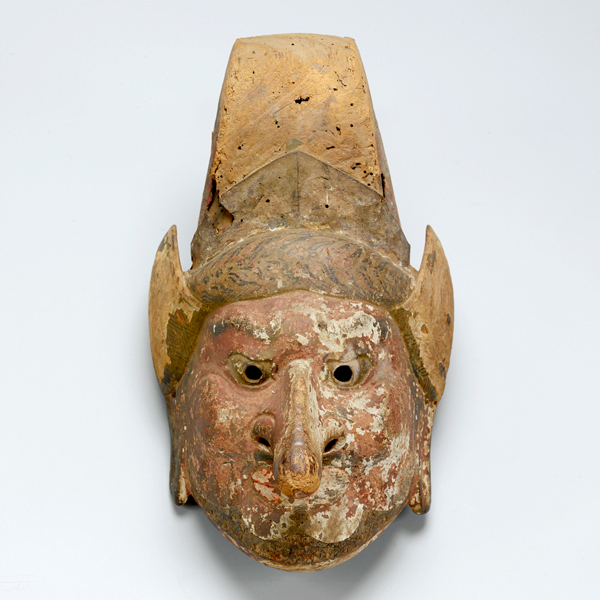기악 가면 전시 해설
-

중요문화재 기악 가면(취호왕) 아스카 ~ 나라 시대・8세기
호류지보물관 제3실
2023년 4월 25일(화) ~ 2024년 4월 21일(일)기악(일본어로 기가쿠)은 큰 가면을 쓰고 촌극을 곁들이면서 음악에 맞추어 야외를 줄지어 행진하는 불교 의식입니다. 7세기 전반에 한반도의 백제로부터 일본으로 전래된 것으로 알려져 있습니다. 일본에서는 7, 8세기에 성행하였지만, 그 후 점차 쇠퇴하면서 결국 모습을 감추게 되었습니다. 호류지 헌납 보물의 기악 가면 중에는 녹나무로 만들어진 가면이 19개, 오동나무로 만들어진 가면이 9개, 건칠로 만들어진 것이 3개 등 3종류가 있습니다. 녹나무로 만들어진 것은 7세기 후반부터 8세기 초에, 나머지는 8세기에 만들어진 것으로 추정됩니다.
| 지정 | 명칭 | 수량 | 작자/출토/전래 | 시대/연대/세기 | 소장자/기증자/진열품 번호 | 비고 | |
| 추천 | 중요문화재 | 기악 가면(사자아) | 아스카시대 7세기 | N-208 | |||
| 추천 | 중요문화재 | 기악 가면(치도) | 아스카시대 7세기 | N-209 | |||
| 추천 | 중요문화재 | 기악 가면(취호왕) | 아스카~나라시대 8세기 | N-231 |
